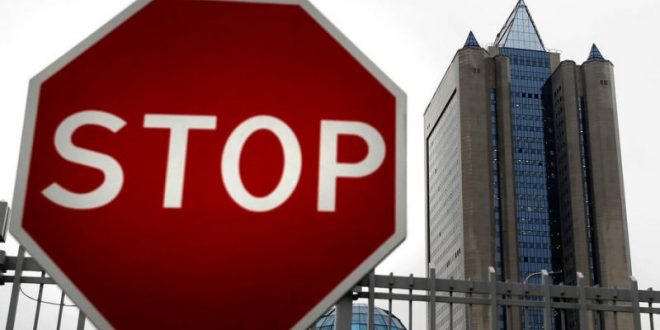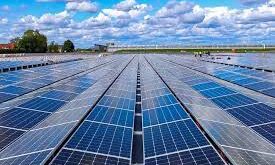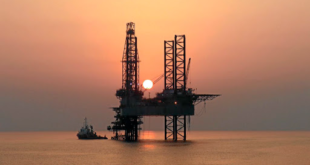The Russian invasion of Ukraine has put the European energy and climate policies through their most difficult test so far. The spike in energy prices aggravated by the slow pace of energy transition in Europe and the excessive reliance on Russian fossil fuel imports have demonstrated the need for a new European Energy and Climate Security Strategy. One that makes a clear break with fossil fuels in the foreseeable future, including gas, despite appeals to the contrary.
This new vision for developing the European economy should step on a deep cut of natural gas imports from Russia that have continued to finance the Kremlin’s aggression in Europe.
True energy independence means a complete phase-out of natural gas from the energy system and its replacement with renewable energy technologies and energy efficiency. The immediate pressure to shrink Russia’s share of the European energy markets risks a new long-term gas lock-in via LNG imports, some of them from similarly authoritarian countries.
The push for new contracts with alternative suppliers promoted by Germany, Italy and a number of Central and Eastern European countries is at loggerheads with the EU’s green vision and raises the spectre of stranded assets in gas infrastructure after 2035.
Germany and Italy have been the key drivers behind the EU’s growing dependence on natural gas from Russia, with the share of Russian gas increasing from 34% to 49% between 2009 and 2019 in the former and from 29% to 47% in the latter.
The two countries’ industrial conglomerates have emerged as the most vulnerable to a Russian supply cut and the main doomsayers to forming a united position to phase out Russian energy imports.
Dead end for gas
The energy crisis should have demonstrated that natural gas cannot be a viable transition fuel. the rise of gas prices to unsustainable levels is undermining Europe’s industrial competitiveness and political stability.
The global LNG market is expected to remain undersupplied until at least 2023, so gas prices are likely to remain extremely high. This is already visible in the price of TTF for December 2024, currently standing 300% above pre-crisis levels.
Relying on natural gas for balancing intermittent renewables exposes Europe to high costs and price volatility. The current energy crisis is a gas price shock that filtered through to electricity prices.
While populist discourse has stirred the political debate towards reforming the electricity market design to decouple electricity prices from gas prices, ACER’s recent Final Assessment of the EU Wholesale Electricity Market Design has demonstrated that the current market design has even partly helped to mitigate the price shock.
Addressing the root cause of the energy crisis (high gas prices and reliance on natural gas in power generation) requires measures to reduce the dependence on natural gas by accelerating demand reduction through efficiency, fuel switching (including to locally produced biogas) and deep electrification based on renewable energy sources.
Such a profound transformation requires that European countries use this unique opportunity to accelerate the transition across all sectors. This requires a focus on transformative solutions that, unlike what some voices in the political debate might argue, are already viable replacements for natural gas and fossil fuels more generally.
The accelerated transition also requires an even stronger focus on energy efficiency. In many cases, electrification itself results in gains in energy efficiency. Electrification of low-temperature heat in buildings based on heat pumps brings such efficiency gains, as they are four times more efficient than conventional boilers.
Moreover, electrification is also possible for medium and high-temperature industrial heat demand, with electricity-based technologies for high-temperature processes such as steel production requiring similar capital investment and efficiency as conventional alternatives.
Hence, arguments that investments in new LNG infrastructure do not delay the green transition because natural gas will continue to play an essential role as a bridge fuel and European demand for natural gas will fail to drop in line with the IEA’s optimistic forecast is internally flawed in its logic. It already assumes a delayed transition relative to what Europe needs to do to achieve carbon neutrality by 2050.
A natural gas lock-in through expensive infrastructure investments will slow down the renewables’ buildout and will lead to wasteful spending. Instead, these funds could be leveraged for accelerating the transition.
Why this matters
Decarbonising energy markets will deliver a blow to the Kremlin’s ambition to increase its economic and political influence in Europe. Around a fifth of Russia’s budget revenues come from the sale of gas to Europe, which is more than what the Kremlin spends every day to continue bombing Ukrainian cities.
The massive uptake of renewables also contributes to lower electricity supply costs, with the high gas prices that have made previously prohibitively expensive technologies such as offshore wind very attractive.
Choosing to decarbonise the energy system while requiring massive investment in renewable energy, storage technologies, and smart grids could also solve the security of supply conundrum linked to the exit of fossil-fuel-based baseload capacity.
To phase out natural gas from the European energy mix, European governments should focus on available replacement technologies and on-demand reduction through energy efficiency, especially targeting poor households.
What’s next for energy and climate security
Beyond the current energy security challenges, emerging risks related to the dependence on mineral resources require the development of innovative and actionable policy instruments for energy and climate security risk mitigation and diagnostics.
That is why the Center for the Study of Democracy (CSD) proposes to launch at the end of May 2022 a European Energy and Climate Security Risk Index (ECSRI) for the EU and for its member states. The Index will aim to:
• Prompt data-driven policy action and improve the transparency and understanding of geopolitical and climate-related risks
• Expose historical path dependencies that have led to the dependence on Russian oil and gas imports that have ultimately enabled the war in Ukraine
• Provide pathways for decarbonisation and reduce the national economies’ reliance on fossil fuels with a primary focus on natural gas.
• Tackle the most dangerous energy and climate security risk that has been boiling underneath the surface, namely energy poverty.
Such instruments are needed to enable the EU to further and deepen the coordination of national policies across sectors and policy areas on the back of a long-term political, financial and social commitment. They would allow Europe to dream big and reinforce its fossil fuel exit without losing sight of energy and climate security risks, like with the gas crisis and the war in Ukraine.

 Iran Energy News Oil, Gas, Petrochemical and Energy Field Specialized Channel
Iran Energy News Oil, Gas, Petrochemical and Energy Field Specialized Channel



